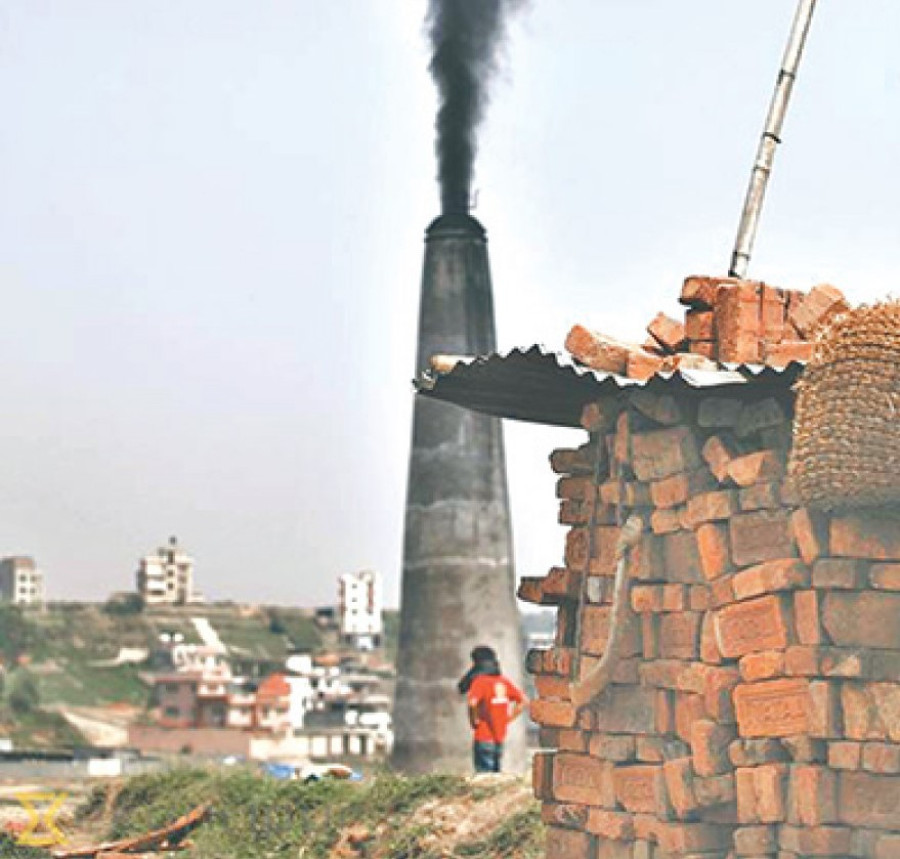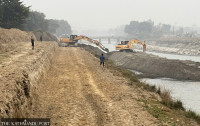National
Forced labour, bonded labour and child labour prevalent in country’s brick kiln sector, new report says
Organisations call for concerted efforts by all key stakeholders–government, industry employers and workers–to work for a decent work agenda in the country’s brick production industry.
Post Report
Labour exploitation in forms of forced labour, bonded labour and child labour is prevalent in the country’s brick industry, a new study has found.
The survey on Employment Relationship in the Brick Industry in Nepal, released on the eve of the International Year for the Elimination of Child Labour, has unveiled prevalence of labour exploitation with 6,229 (3.5 percent) workers in forced labour among the 176,373 manual labourers in brick factories (including family members).
An estimated 34,593 children (between ages of five and 17) are living in brick factories, the survey shows. “Children account for approximately 10 percent (17,738) of total workers, and 96 percent of these working children (17,032) were identified as being in child labour.”
The new evidence collected through the survey, jointly carried out by the Central Bureau of Statistics, International Labour Organisation and UNICEF, indicates that bonded and forced labour still exist in the country’s private sector, including in the brick industry.
“The study, first of its kind in Nepal, has highlighted the important insights about the child labour situation in the brick kiln industry, which would greatly contribute to monitor child labour related policies and programmes implemented by the government of Nepal” Nebin Lal Shrestha, director general of the bureau said in a pres statement on Friday.
The report, first nationally representative research on the brick industry in South Asia, captures major findings that will inform government, industry and other stakeholders’ efforts to end child and bonded labour practices in the sector.
It also highlights the linkages between internal and cross-border migration and vulnerability to child labour and economic exploitation.
According to the survey findings, migrant workers represent a high proportion of workers in the brick industry. Only 22 percent of total workers are originally from the same district as where the factories are located, 32 percent of the workers are from other districts, and 46 percent of the workers are Indian migrants.
Rolpa, Rautahat, Dang, Kailali and Sarlahi are the top five source-districts of Nepali brick factory workers that supply nearly 46 percent of workers across the country, according to the survey.
In terms of payment modality, over three quarters (75.7 percent) of the workers receive an advance payment from the labour contractors and 3.5 percent—directly from the employers. The advance payments having no clarity on repayment usually tend to turn into debt for next years, thereby increasing vulnerability to forced labour.
“The report highlights important statistics on decent work-deficit that leads to forced and child labour situation in Nepal, and while the challenges to overcome it are multi-faceted, ILO Nepal is committed to supporting the government and the development partners through its programmes by implementing preventive as well as responsive measures,” said Richard Howard, director of the ILO Country Office for Nepal.
Nepal has made remarkable progress in fighting traditional bonded labour practices. Nepal became a pathfinder country of the Alliance 8.7 that is working to accelerate progress towards Sustainable Development Goal 8.7.
The SDG 8.7 talks about eradicating forced labour, end modern slavery and human trafficking and secure the prohibition and elimination of the worst forms of child labour, including recruitment and use of child soldiers, and end child labour in all its forms by 2025.
The Nepal government has also introduced National Master Plan on the Elimination of Child Labour (2018-2028) with the aim of banishing the ‘exploitative and worst form of child labour’ by 2022 and all types of child labour by 2025.
The survey findings, however, point at an immense challenge Nepal faces to eradicate bonded and forced labour, which could be related to poverty and illiteracy.
Illiteracy was found to be an important vulnerability factor for child and forced labour, found the survey, leading to a direct impact on the awareness of the labour laws and regulations among workers and employers.
The survey revealed that only 4 percent of workers were aware of the current minimum wage rate; 4 percent say they are aware of labour law or rules.
Membership in trade unions was almost non-existent. Employers’ knowledge of the legal framework is more common: 66 percent of employers are aware of the Labour Act; 42 percent of the Animal Act; 88 percent of the Child Labour Act; and 63 percent of the Security and Health Act.
“As we enter the International Year for the Elimination of Child Labour, this report is a reminder of the critical need to strengthen concerted action to eliminate the worst forms of child labour in all sectors of society,” said Elke Wisch, UNICEF Nepal representative. “This new evidence will inform and guide government policymakers, brick kiln industry stakeholders and development actors in their collective action to tackle the economic exploitation of children and their families.”
The report calls for concerted efforts by all key stakeholders–government, industry employers and workers–to work for a decent work agenda in the country’s brick production industry.
“UNICEF is committed to continued collaboration with the government of Nepal, and industry leaders to ensure children are removed from the industry, and to support children and their families to access social rehabilitation and protection services,” said Wisch. “Above all, we must work together to ensure that the cost of producing construction materials is not borne by the children of Nepal.”




 10.12°C Kathmandu
10.12°C Kathmandu














